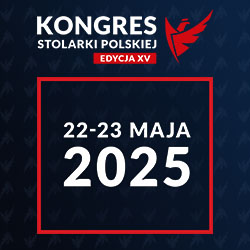Open Access (Artykuł w pliku PDF)
Maintenance costs of public utility buildings on the example of university facilities
prof. dr hab. inż. Edyta Plebankiewicz, Politechnika Krakowska, Wydział Inżynierii Lądowej
ORCID: 0000-0003-0892-5027
mgr inż. Jakub Grącki, Politechnika Krakowska, Wydział Inżynierii Lądowej
ORCID: 0000-0002-5236-5584
Adres do korespondencji: Ten adres pocztowy jest chroniony przed spamowaniem. Aby go zobaczyć, konieczne jest włączenie w przeglądarce obsługi JavaScript.
DOI: 10.15199/33.2022.11.07
Studium przypadku
Streszczenie. Celem artykułu jest analiza planowanych i poniesionych kosztów remontów w szesnastu budynkach uczelni wyższej. Przeprowadzone analizy wykazały, że największe koszty remontów związane są z robotami wewnątrz budynków. W przypadku tych prac uzyskano także największe średnie wartości kosztów jednostkowych, tzn. na m2 powierzchni użytkowej budynku. Wysoka wartość odchylenia standardowego świadczy jednak o dużym rozrzucie wartości tych kosztów. Analiza statystyczna wskazała na silne zależności pomiędzy kosztem jednostkowym a liczbą kondygnacji budynku. Autorzy planują poszerzyć znacznie bazę danych, co będzie pierwszym etapem w budowie modelu regresji, pozwalającym na przewidywanie kosztów remontów budynków w ich cyklu życia.
Słowa kluczowe: remont; koszty utrzymania budynku; cykl życia; uczelnia.
Abstract. The purpose of this paper was the analysis of planned renovation costs and the actual costs of 16 university buildings. The carried out analysis showed that the highest renovation costs are associated with works performed inside of the buildings. For these works, the highest average unit cost values were also obtained (m2 of usable floor area of the building). However, the high value of the standard deviation indicates a large dispersion of these costs value. Statistical analysis showed strong relationship between the unit cost and the number of storeys in a building. A slightly weaker, but still satisfactory result was obtained for the usable area parameter. The authors plan to significantly expand the database,whichwill be the first step in building a regressionmodel to predict building renovation costs over their life cycle.
Keywords: renovation; building maintenance costs; life cycle; university.
Literatura
[1] Baryłka A, Baryłka J. Eksploatacja obiektów budowlanych. Poradnik dla właścicieli i zarządców nieruchomości. Wydawnictwo CRB; 2016.
[2] Ustawa z 7 lipca 1994 r. Prawo budowlane (Dz.U. 2021 poz. 2351).
[3] Ustawa z20lipca2018r.Prawooszkolnictwiewyższymi nauce (Dz.U. 2018 poz. 1668).
[4] Bucoń R. Model decyzyjny wyboru wariantów remontu lub przebudowy budynków mieszkalnych. Politechnika Lubelska; 2017.
[5] Abbas Al-Refaie A, Al-Shalaldeh H, Lepkova N. Proposed procedure for optimal maintenance scheduling under emergent failures. Journal of Civil Engineering and Management. 2020; 26 (4): 396–409.
[6] Chansombat S, Pongcharoen P, Hicks C. A mixedinteger linear programming model for integrated production and preventive maintenance scheduling in the capital goods industry. International Journal of Production Research. 2019; https://doi. org/10.1080/00207543.2018.1459923.
[7] Kim J, Kim T,YuY, Son K. Development of amaintenance and repair cost estimation model for educational buildings using regression analysis. Journal of Asian Architecture and Building Engineering. 2018. https://doi.org/10.3130/jaabe.17.307.
[8] Li C, Guo S. Life cycle cost analysis of maintenance costs and budgets for university buildings inTaiwan. Journal ofAsianArchitecture and Building Engineering. 2018. https://doi.org/10.3130/jaabe. 11.87.
[9] Plebankiewicz E, Leśniak A, Vitkova E, Hromadka V. Models for estimating costs of public buildings maintaining – review and assessment,Archives of CivilEngineering. 2022. doi: 10.24425/ace. 2022.140171.
[10] Plebankiewicz E,Grącki J .Analysis of the impact of input data on the planned costs of building maintenance. Sustainability. 2021. doi: 10.3390/su132112220.
Przyjęto do druku: 03.10.2022 r.
Materiały Budowlane 11/2022, strona 22-24 (spis treści >>)





























